Image Credit: Don Gatley
Image Credit: Don Gatley Here's the other side of that condenser in the attic. It's bad enough that it's in an attic, which gets very hot in winter. But when that insulation gets sucked into the fins that the condensing coil is embedded in, air flow drops, performance suffers more, and the system will die even sooner.
Image Credit: Don Gatley 11 condensers in one small room. Even though this room isn't as bad as an attic, it's still nuts to put these condensers there.
Image Credit: HVAC Hacks and Other Screw Ups
Occasionally I get asked if it’s OK to put the condensing unit of an air conditioner or heat pump in a garage or other room that’s a buffer space. The thinking is that since the temperature may not be as hot in summer or as cold in winter, the system will operate more efficiently.
I saw recently that this same question came up in a column in Home Power magazine, so I thought this would be a good time to cover this issue (once and for all?) here.
The answer is no. In fact, the answer is an emphatic NO. Here’s why:
The way an air-source heat pump or air conditioner works is that it exchanges heat with the air surrounding the condenser. In summer, it dumps heat into that air. In winter, it absorbs heat from that air. When the condenser sits outdoors, it’s connected to a mass of air that’s practically infinite. In other words, no matter how much heat that unit dumps outside, it’s not going to change the outdoor temperature.
If you put the condenser in a garage, attic (as shown above), or other space, it’s now connected to a finite mass of air. As it dumps heat into that air in summer, the temperature in the room will rise. As it pulls heat from it in winter, the temperature will drop. The smaller that room, the more temperature change you’ll get.
What do you think happens to the efficiency and capacity of an air conditioner when it has to dump its heat into hotter air? It drops. What happens when the air gets too hot? The condenser may not be able to do its job — condensing the refrigerant so that it all becomes a liquid again. The refrigerant goes to the evaporator coil hotter and wetter and at higher pressure. That’s a recipe for failure.
Condensing unit in an attic?!
I have no idea why anyone would put an air conditioner in an attic, as shown above, but the second photo of that unit shows another problem. That system not only is working with a smaller, hotter volume of air, but it’s sucking blown insulation up against the coil, reducing the air flow. I guess they wanted to make sure that system failed as quickly as possible.
Even in a cold climate where you don’t use the system for cooling, you can’t do this. Not only is there not enough air, but if the temperature is higher, it’s at least partially due to heat loss from the house. A better building enclosure is a much more practical way to keep the heat in your home in winter.
Eleven condensers in one small room
The photo above is from a Facebook page called HVAC hacks and other screw ups. They show lots of good photos of HVAC gone wrong. If you think I post some ugly stuff here, take a look at their page.
They posted the photo above yesterday. The caption said that in addition to the six condensers you see here, another five were in the room, too. That’s eleven condensers in a room so small that the widest angle photo he could get shows only about a 10-foot section.
Wow! Not only is there a small volume of air, but you have eleven condensers fighting over the little that’s there. Yeah, they’ve got louvers connecting it to more air (a parking deck? outdoors?), but that’s not sufficient.
“Bright ideas” usually don’t work
Just because you shouldn’t put a condenser in a buffer space doesn’t mean that you can’t help it perform better with good placement. Put it outside and follow these two rules:
- First and foremost, make sure it has plenty of space around it for good air flow. Don’t put it in a corner or well, surround it with other condensers, or plant bushes all around it. Unlike a house, an air conditioner needs to breathe.
- Second, you can help it be more efficient by keeping it out of the afternoon sun. If it’s possible, consider placing it on the east or north side of a house.
The upshot of all this is that if the idea ever occurs to you to put a condenser in a place other than the outdoors, don’t do it.
Allison Bailes of Decatur, Georgia, is a speaker, writer, energy consultant, RESNET-certified trainer, and the author of the Energy Vanguard Blog. You can follow him on Twitter at @EnergyVanguard.
Weekly Newsletter
Get building science and energy efficiency advice, plus special offers, in your inbox.

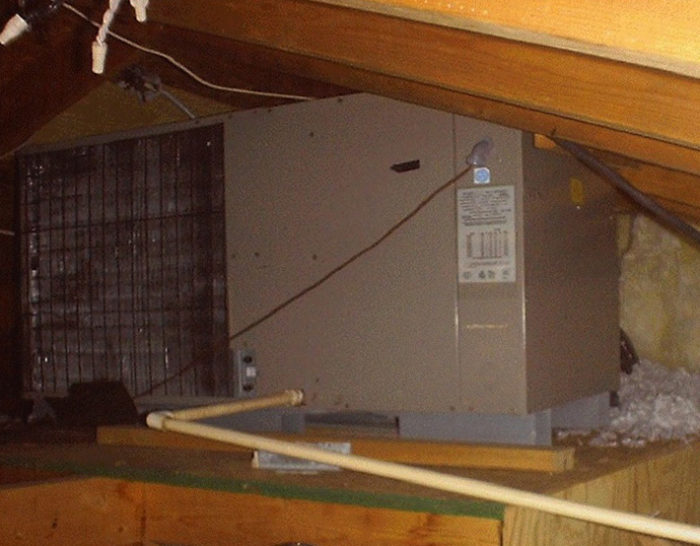




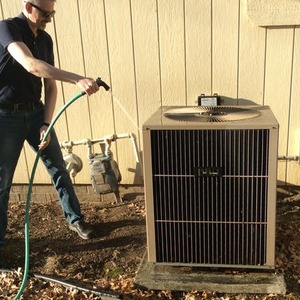
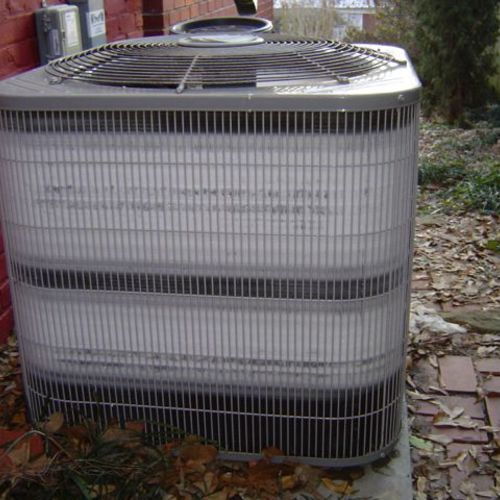
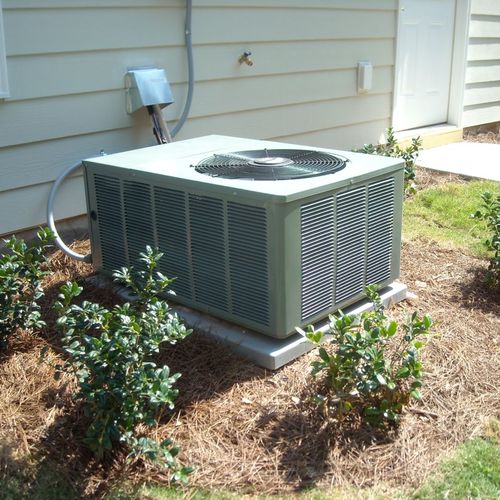
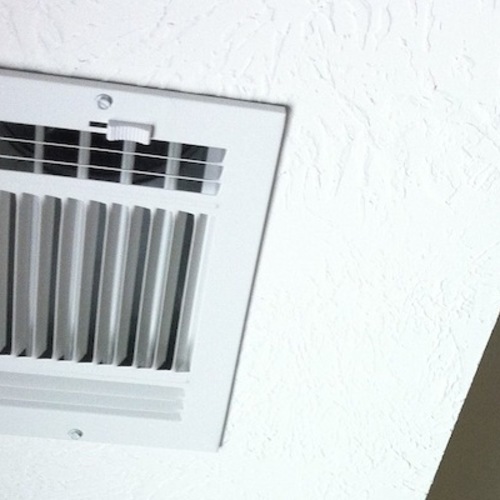






17 Comments
As discussed priorly with
As discussed priorly with Martin, i believe there is a situation where installing a HP inside makes some sense, with a water heater HP inside the enveloppe in a cooling climate ...
( let's assume a humid hot climate in southern .. )
i like the picture with ~10 HP in the small room ..super setup !!!! :)
Heat pump in buffered space
In the winter time why not put the heat pump outside but in a glass or plastic topped box where the lid could come off in the summer. When it is sunny you could always be heating the air. At least that would work for the day time?
To complete my comment or add
To complete my comment or add another twist the heat pump would be suspended off the ground and so would the glass topped box. Since heat goes up and cold goes down. The hot air would rise to the heat pump and the cold air would go down and out of the box.
Boved any heat pumps anyone? Solar boosting?
Robert could your box description at all interfere with the air floa . ? at any point?
Those fans need all the least resistance, unless it is a specific unit made for this by OEM installation guides.
Then will that hot air really rise as fast as these move air in and out already/
Describe that box more clearly, but I think a few others will have a word on all that.
Water-cooled and GeoThermal HEAT PUMPS go in attics regularly and enclosed on roofs, and have well designed ducting for attics just like air solar systems from roof mountings do.
Solar Boosted but Outdoors
Never yet seen much to the Austrailian Govt granted Solar boosted heat Pumps with Air Solar pickups to the intake of an existing Heat Pump...
Did anything get made of that?
There is a solar scam out there...
I won't name names here, but there is an outfit that purports to double the SEER of a central air conditioner with the addition of solar thermal energy to the refrigerant at the already-hottest part of the cycle, just as it leaves the compressor.
Neither I nor anyone I know has been able to determine what thermodynamic advantage lies in doing that, and, needless to say, there is no support to be found for it at ahrinet , where all certified SEER ratings are maintained.
Adding more heat to the hot side confers no operating advantage to an AC system. Overcoming friction loss of the panel tubing adds load to the compressor, and the solar thermal heat adds to what must be rejected before the gas condenses back to a liquid. In a worst case scenario, the refrigerant could be heated to the point where its lubricating oil begins to break down.
As near as I can tell, adding a solar thermal panel to a central AC system is an attempt to make the whole system "solar property" for the purposes of a 30% tax credit.
The scheme persists - on several occasions its local purveyor has "promised to get back to me" with technical data supporting the scheme, but I've heard nothing.
I said I wouldn't name names, but it occurs to me I should make it clear this criticism IS NOT directed at Lennox's solar PV / AC combinations. Lennox basically uses an AC system's power circuit as a path for solar generated electricity to get back to the electrical panel and ultimately the grid, and there is nothing technically wrong with that idea. I'm not qualified to opine on the tax implications of the Lennox arrangement.
Finally, I would echo the recommendation that Robert, above, do nothing that would impede air flow through a heat pump - adhere to manufacturer recommended minimum clearances.
Mini split outside. on south side
We live just outside of Saint John, NB, Canada with about 8000 DHD(F). The compressor is mounted on the south side of the house about 2 feet off the ground about 2 feet from the house. There are quite a lot of trees in the yard and they allow more sun in the winter and shade in the summer.Nothing is close to the unit. It seems to work quite well.
Even if located outdoors, there can be problems
http://www.menards.com/main/building-materials/landscaping-materials/accessories/evergreen-utility-cover/p-1729856-c-5782.htm
I've seen a few of these out in the wild - one was even decorated with some pretty plastic flowers. These severely reduce the air flow thru the condensing unit (or heat pump) and guarantee high energy usage with a possibility of compressor failure.
AC battle to the death
This reminds me of a photo a friend sent me that he took in India. It shows the indoor hallway of a shopping mall. This is no American style mall with spacious walking space. This is the equivalent of an office building with doors on each side of a purely functional hallway. Mounted above the door of every store is one or more AC window units blowing hot air into the hallway and right at opposing AC units on the other side of the hall. Must be brutal to walk down that hall.
Response to Jonathan Teller-Elsberg
Jonathan,
Sometimes air conditioners must do battle, even outdoors. This photo was taken in Singapore. (Photo credit: Taro Hama - Flickr.)
.
Response to Tim O'Brien
Tim,
The link you posted made me laugh out loud. That's a new entry for my Useless Products list, for sure -- the Air Conditioner Camouflage Device. And it's only $70! Hilarious.
.
People do crazy things with condensers!
@Tim: Wow! That's just plain stupid. I haven't seen those yet, but I have seen covers made for the off-season. I wonder how many of those are still on the condenser when someone goes to turn on the AC when summer rolls around.
@Martin: You've shown only part of that building in Singapore. The photo below shows that there are a lot more condensers there, and if you like at the two far corners, you can see there are even more on the two sides we can't see on the left and right.
(The photo I posted is also from flickr but credited to douglemoine.)
Response to Allison
Allison,
Evidently the building is famous, and is photographed by lots of HVAC contractors who happen to be on vacation in Singapore.
Mini Split system Heat Pump condenser in large attic?
Here is my problem. I am wanting to put in a 9,000 BTU split system Heat Pump in my top floor condominium. The condo association will not allow the condenser to go outside.
I have a large attic (1500sf; 12ft high in center) available. Attic has 18 inches of ceiling insulation.
System is Fujitsu with a SEER of 24 and HSPS 13. The condenser fan is rated at 1206cfm max.
I am in Seattle where the average winter temperature range is 36 to 50 degrees in the winter.
Do you think this small of a unit would have enough natural air circulation to work? I can add a 1200 CFM attic fan to circulate outside air if necessary
I would appreciate any comments. Thanks..
Response to Leonard Pezzano
Leonard,
I don't recommend that you go forward with your plan. The condenser belongs outdoors, not in an enclosed space. If you try to install it in an attic, the condenser will make the attic very hot during the summer and very cold during the winter, drastically lowering the unit's efficiency.
If you contact a technical rep at Fujitsu, I think that you will learn that the manufacturer of the equipment requires the condenser to be installed outdoors.
condensor location
Hello,
I was wondering if a condenser could be placed under a carport, or if there are concerns about air quality. The carport is located under a deck, with two walls connected to the home, and the other walls open.
Thank you!
Response to Whitney Scurlock
It's OK to put a condensing unit under a carport, but you have to make sure it meets all the required clearances and the carport needs to be open and well connected to the outdoor air. (If it isn't, it's probably more of a garage than a carport.)
Log in or create an account to post a comment.
Sign up Log in